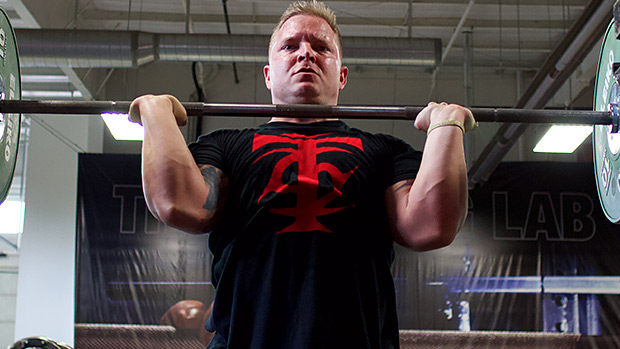The barbell overhead press is the king of shoulder exercises. And for that reason, it's often first up in lifters' workouts.
The only problem? Most people do insufficient warm-ups for their shoulder sessions. You see it all the time. They'll usually do a rotator cuff warm-up then go straight into pressing.
The Standard (Insufficient) Warm-Up
There are a few problems with dumbbell warm-ups. First, if like in this video, you're standing doing rotations, you're misunderstanding how gravity works.
You're not loading the rotator cuff unless you're swinging the dumbbells around and having to decelerate them, and that would be a bad idea as your warm-up. All you're getting is an isometric bicep workout.
Here's Another Thing People Do...
Is this how YOU warm up? If you're in the position in this video it makes a bit more sense, but not much.
In that position you only get a load on the external rotators. And it only significantly loads the muscles at the bottom when the shoulder is internally rotated and the arm is in that specific position at the bottom of a pressing cycle, not through the full range of a pressing motion.
When you overhead press, you're pretty much fully externally rotated at the shoulder. That means it's the internal rotators you want to be simultaneously flexible, strong, and recruited well enough to stabilize the shoulder.
This means you'll get into a good position and be able to drive the weight. It also means you'll have more stability which will stop you from going too far backwards.
Even the better of the two dumbbell warm-ups above is loading the wrong set of rotator muscles in the wrong range of shoulder rotation... and doing it only in one part of the pressing cycle.
What's the best way to do it then?
I call it the Peil press. Take a look...
This is a warm-up variation that involves using a broom handle and a band to get the direction of force pulling you into external rotation throughout a full shoulder pressing cycle.
It stretches everything required to improve your pressing position while firing up all the stabilizing muscles that resist external rotation – the ones that stop you from losing the barbell backwards when pressing overhead, hurting yourself and killing your training partner!
Ease into this. It takes the shoulder through the classic dislocation position so be cautious, particularly if you have a history of shoulder instability. That said, with sensible loading and progression, the risk of this exercise is also what gives it a fantastic protective benefit. Get good at it and it will condition you against shoulder instability.
Bonus: If you have stiff shoulders on squat days, try using it before you get under the iron, especially if you're a low-bar squatter.





